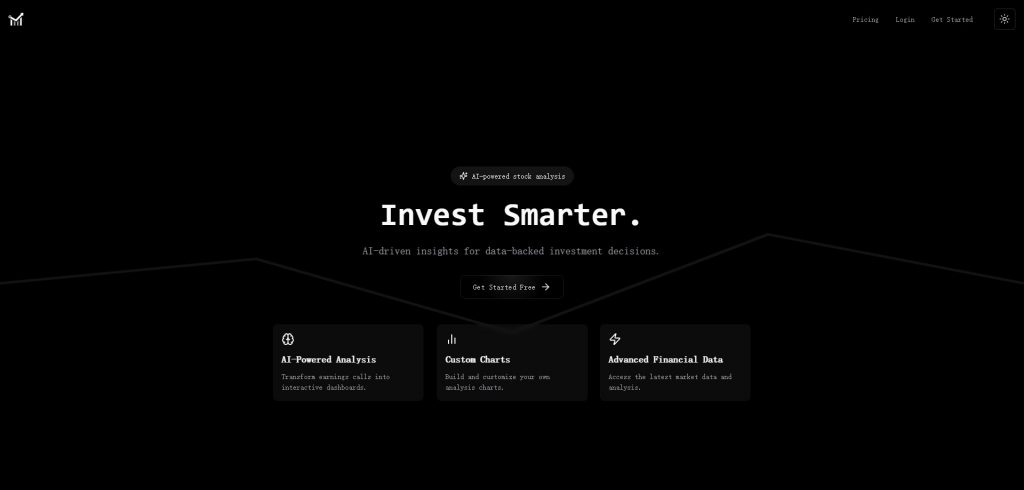20 Free Ways For Picking AI Stock Predicting Sites
20 Free Ways For Picking AI Stock Predicting Sites
Blog Article
Top 10 Tips For Evaluating The Security And Privacy Of Ai Analysis And Stock Prediction Platforms
As they typically handle sensitive financial data, and even personal data, security and confidentiality of data is essential. In the event of a breach, or misuse of data, it can cause significant financial loss and reputational damage. Here are the top 10 tips for evaluating the security and privacy on these platforms.
1. Assess Data Encryption
Secure transmission of data: Make sure that the service you are using has secure protocols that protect your data while it is transmitted between their servers and your device (e.g. TLS/SSL).
In-rest encryption: Check that sensitive data stored on platforms servers are secured with high-quality encryption standards.
End-to-end encryption: Determine if the platform offers end-to-end encryption of sensitive communications or data.
2. Assess Authentication Mechanics
Two-factor verification (copyright) : Check that the platform is compatible with copyright, which provides an extra security layer.
Biometric authentication: Verify if your platform offers biometric login options for mobile applications (e.g. fingerprints or facial recognition).
Password policy: Determine that the platform is able to enforce strong password policies (e.g. minimum length or complexity requirements).
3. Check for Compliance
Financial regulations: Make sure that the platform complies with relevant financial regulations (e.g., SEC, FINRA, MiFID II).
Privacy laws for data: Ensure that you are in compliance with data privacy laws that apply to your business in the event that they are applicable (e.g. CCPA or GDPR).
Audit certifications: Find out whether the platform has been subject to security audits by a third party or has certifications (e.g., SOC 2, ISO 27001).
Review Data Access Controls
Role-based access: Ensure that the platform has roles-based controls (RBAC) that restricts data access only to authorized users.
Permission levels: Check whether you are able to assign granular permissions to different users or team members.
Activity monitoring Check to see whether your application is monitoring and tracking the user's activity.
5. Evaluate Vulnerability Management
Regular updates: Ensure that the platform is regularly updating its software to fix security holes.
Penetration Testing: Verify whether the platform is subjected to penetration tests which helps identify and fix security flaws.
Bug bounty programs: See whether the platform offers bugs bounty programs to incentivize external security researchers to report vulnerabilities.
6. Evaluate Data Privacy Policies
Transparency The privacy policies on the website to understand how your data will be collected, used and shared.
Data minimization - Make sure that the platform collects the information it requires for its operation.
Data sharing with third parties: Verify that the platform is able to share your information with a third party and If so in the process of sharing, what.
7. Secure API Utilization is Verified
API security: Make sure the API security of the platform API uses secure authentication methods, like OAuth and API keys, which are used to secure data exchanges.
Rate limit: Determine if the API has rate limits to stop brute-force attacks or abuse.
Review the logs of access. Verify that the platform monitors API usage, and logs it to track usage.
8. Assess Incident Reaction and Recovery
Plan for response to an incident Be sure that the platform has a solid plan to handle security breaches and data breaches.
Notification policies: Verify whether the platform informs users immediately in the case of a security breach.
Backups of data - Ensure that your platform is equipped with a strategy for disaster recovery and regularly backs the data up.
9. Assess security measures for physical security
Data center Security: Make sure that servers are located in secure data centers, with physical security measures (e.g., monitoring, access controls).
Redundancy: Determine if there are redundant platforms on the platform to ensure that data is available in the event of hardware failure.
Geographic distribution: Determine if data is distributed across multiple geographical locations to ensure greater protection.
10. Examine the privacy controls of your users
Data deletion: Ensure the platform permits you to erase your data permanently if you decide to stop making use of the platform.
Privacy settings: Determine whether your platform has privacy settings for controlling the information that is disclosed or made public.
Verify if an anonymization is applied to data that is used in machine learning or in analytics.
Bonus Tips
Feedback from users and reputation: Review feedback and reviews from users in order to gauge the reputation of the platform in terms of privacy and security.
Trial period: Try a free trial or demo to test the privacy and security features.
Customer Support: Make sure that the platform has robust assistance for any problems or issues related to security.
These suggestions will assist you assess the privacy and security of AI trading platforms that forecast or analyze the prices of stocks. Your personal information and financial information will be safe. A secure platform will not only safeguard your assets, but also build confidence and trust in the service. Have a look at the top rated sell about investing ai for blog advice including incite, ai stock, ai stock trader, ai stocks to invest in, best ai stock, best ai trading platform, trade ai, ai stock trading app, ai trade, best ai stocks to invest in and more.
Top 10 Tips On Assessing The Regulatory Compliance For Ai-Powered Stock Predicting/Analyzing Trading Platforms
Regulatory compliance is a critical aspect to consider when considering AI stock predicting/analyzing trading platforms. Compliance can help ensure that the platform is operating within legal frameworks and protecting personal data of the users. Here are 10 top tips for evaluating the regulatory compliance of these platforms:
1. Verify the licensing and registration
Authorities regulating the platform: Make sure that the license and registration is with the appropriate financial regulators (e.g. SEC or FCA in the United States, ASIC or ASIC in Australia).
Broker partnerships: Verify that brokers integrated with the platform are licensed.
Public records: Search the regulator's site to find out whether the platform is registered or if it has ever violated the law.
2. Verify Data Privacy Compliance
GDPR: If you operate in or serving users in the EU Make sure that the platform meets the requirements of the General Data Protection Regulation (GDPR).
CCPA - California Consumer Privacy Act: Verify compliance of California users.
Data handling policies: Check the privacy policies for data on the platform to see how it describes the collection, storage, and sharing.
3. Evaluation of Anti-Money-Laundering Measures
AML policies: Make sure the platform is equipped with strong AML policies to stop and identify cash laundering.
KYC procedures: Determine whether the platform supports Know Your Customer (KYC), which verifies user identities.
Monitoring transactions: Find out whether the platform monitors transactions for suspicious activity and if it reports it to authorities in charge.
4. Check for your compliance with Trading Regulations
Market manipulation: Make sure the platform has measures in place to stop manipulating the market, like spoofing or wash trading.
Types of orders. Verify whether your platform is in compliance with the regulations for orders.
Best execution: Make sure that the platform is following the best execution methods to ensure trades are executed at the most favorable price.
5. Assessment of Cybersecurity's compliance
Data encryption: Ensure that the platform safeguards your data during the transfer process and in rest with encryption.
Incident response: Verify if the platform has a clear incident response plan in case of cyberattacks or data breaches.
Certifications: Make sure the platform is certified for cybersecurity.
6. Transparency as well as Disclosure and Evaluation
Fee disclosure: Make sure the platform clearly outlines the total amount of fees, which includes extra or hidden charges.
Risk disclosure: See if there are clear and explicit disclosures about the risk, especially for leveraged or high-risk trading strategies.
Performance reporting: Make sure that the platform provides honest and precise reports regarding the accuracy of its AI models.
7. Verify the conformity to International Regulations
Trading across borders When you conduct business internationally, you must ensure that the platform meets regulations in all relevant jurisdictions.
Tax reporting: Verify if there are tools or reports available to assist you in complying with tax laws.
Compliance with international sanctions: Ensure that the platform strictly adheres to these rules and does not allow transactions with prohibited entities or countries.
8. Reviewing Audit trail trails and Record-Keeping
Transaction records: Ensure that the platform keeps detailed records of every transaction, both for the purposes of auditing and regulation.
Records of activity by users: Determine whether the platform is recording user activity including logins or transactions as well as modifications to account settings.
Audit-readiness: Determine whether the platform is equipped to provide all necessary documentation and logs for a possible regulatory audit.
9. Check for compliance with AI Specific Regulations
Algorithmic Trading Rules If your platform allows trading using algorithms, ensure that it adheres to regulations such as MiFID II (in Europe) or Reg SCI (in the U.S.).
Fairness and bias: Determine whether the platform is able to monitor and mitigates biases in its AI models to ensure fair and ethical trading.
Explainability - Ensure that the platform is able to provide clear and concise explanations regarding AI-driven decisions, predictions and more. as required by certain rules.
10. Review User Commentaries and Historical Regulatory Historiography
User reviews: Research reviews from users to assess the reputation of the platform's regulatory conformity.
Historical Record: Search for past violations of the regulations such as fines, penalties or fines.
Third-party checks: Check the platform's compliance with the regulations by determining whether it has regular audits from third parties.
Bonus Tips
Legal consultation: Talk to an expert on the subject to check if your platform is in compliance with regulations.
Trial period: Take advantage of a no-cost demo or trial period to evaluate the features of the platform that are compliant.
Customer Support: Verify that the platform has customer support for any questions or issues with compliance.
Following these tips can help you evaluate the regulatory compliance of an AI trading platforms that predict and analyze stocks. You will be able select a platform that is compliant with legal frameworks while protecting your interests. Compliance not only reduces the risk of legal violations, but it also helps build trust and confidence in the services of the platform. Read the top rated our site about best stocks to buy now for more tips including chart ai for trading, ai trading platform, investing ai, best stocks to buy now, best ai copyright trading bot, best ai copyright to buy, ai for copyright trading, ai investment platform, ai for investing, ai investment stock and more.